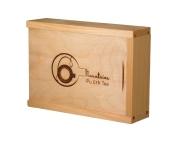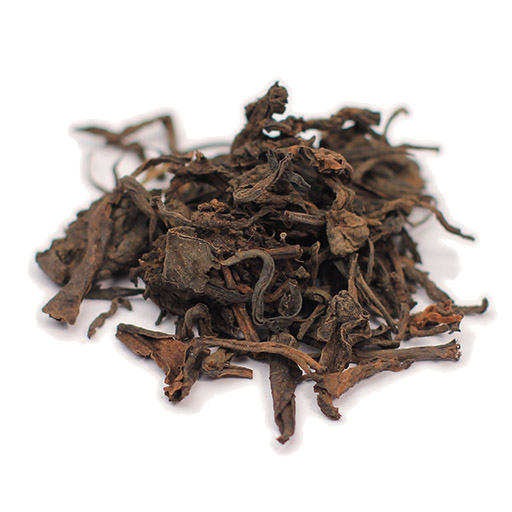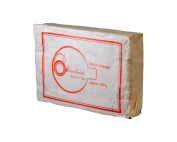What Makes Pu-Erh Tea Special – by Erick Smithe, Xiao Yang
What Makes Pu-Erh Tea Special – by Erick Smithe, Xiao Yang
Where is it from
Pu-Erh comes from Yunnan, situated in a mountainous area, with high elevations in the northwest and low elevations in the southeast. Yunnan province is rich in natural resources and has the largest diversity of plant life in China.
Yunnan is the mother land of tea. Growing in this forest are semi-wild/wild old big-leaf tea trees. This is a specific cultivar of tea tree, which is allowed to grow. The leaves are large, broad and thick. Instead of the tea bushes we find in other regions, here we have actual tea trees. The oldest tea trees in Yunnan are nearly 2000 years old.
Yunnan is known for black tea and dark tea, also known as post-fermented tea. Pu-Erh is the most popular and valuable among them. Pu-Erh is meant to be aged and improves with age much like wine. The processing techniques were developed in the Ming Dynasty and reached the height of fashion in the Qing dynasty, where it was collected extensively by emperors. There are examples of Pu-Erh tea in the Palace Museum which are still perfectly drinkable now, more than a hundred years after the end of the dynastic period.
The boreal forests of Yunnan are home to many ancient and highly prized plants. It is a climate which is as unique as the tea itself. The microbes in the air of this unique region begin acting upon the tea at the bud stage and are preserved and nurtured throughout the processing and aging stages. Only teas from this region are able to be called Pu-Erh and in fact it cannot be produced anywhere else.
For related information, please refer to the following links.
https://www.youtube.com/watch?v=lp2yyWq0QFQ&feature=share
https://www.youtube.com/watch?v=mfUHnPA7CL0
Post-fermented Tea/Dark Tea
Post-fermented tea is a class of tea which is very different from the others. It is a type of tea which has actually been allowed to ferment.
The processing of this tea begins in much the same way as a green tea. After the tea is picked, it is withered in the sun, and then pan-fried. Once this process is complete, the tea is either left in loose form or compressed into forms such as the disc and brick. The microorganisms which exist on the leaves naturally, carry on this process of fermentation for the life of the tea – sometimes decades. As the tea ferments, the tea darkens, becomes smoother, and the health properties of the tea change as well.
The aging time for Pu-Erh tea, from raw leaf to fully fermented Pu-Erh tea is around 20 – 25 years. In the 1970’s a new method was devised to speed up the process, in an effort to satisfy the demands of the French market.
In the ripe or cooked variety of Pu-Erh tea, after the leaf is picked and fried, it is piled up. They then turn up the temperature and the humidity, and this accelerates the fermentation process. It’s a highly skilled process. Workers have to go in every day to rake the leaves to prevent any must or mould from developing. The resulting quality hinges on the care taken in the process and the skill of the artisans. Preserving the enzymes in the tea is essential to flavor, health benefits as well as the ability of the tea to age.
Characters
Of the hundreds of varieties of teas grown in China, Pu-Erh is known as the king of teas. Its flavor is generally more robust than other varietals. The descriptions dedicated to this oddity seem, at first, contradictory. That is until you experience the wonders at first hand. It offers a wealth of experience to the tea drinker, as it ages, continues to reveal ever more subtle and complex aspects of its character.
While there will be a certain consistency of flavor across a batch of tea or teas blended according to one of the well-established recipes, there is tremendous variegation within the category of Pu-Erh generally. Commonly available varieties of Pu-Erh are consistently described as earthy, woody, mushroom-like and something suggesting autumn leaves. The flavor of young raw Pu-Erh is varied and interesting. It could taste honey-sweet, astringent, or bitter. The better, more skillfully handled teas present a wide range of taste and more enjoyable experience. I’ve experienced both potent and complex teas in ways that defy description. The more time we spend with our tea, reaching deeper into the aroma of the leaves, we find a vast array of scents and tastes layered upon one another.
Raw Pu-Erh is amber or gold. The colour of fully fermented Pu-Erh is dark; red to the borders of black. As with the colour spectrum, where black is a combination of all the colors. Pu-Erh can be seen as a synthesis of all tea, containing within its earthy richness all other flavors, properties and benefits which are spread across the camelia synensis (tea) family. I find people are often amazed to see how dark the liquor is. They worry it tastes too strong for them. But once they try it, they find it is not as strong as it looks, and tastes extremely smooth.
The energy of Pu-Erh which many tea enthusiasts talk about in the relation to high quality tea, is not caffeine in its purest sense but something other. In China it is referred to as the energy of the tea, cha qi. This is an insubstantial element of the process which science has yet to fully pin down, though great efforts are being made to determine the empirical basis for what is at times a transcendent experience. This is no more the case than with fine vintage Pu-Erh tea. The darker the tea the less caffeinated the tea, as a general rule, however, contained within some of these dusky brews is something far more profound and mysterious than what it first appears. Some of the best aged Pu-Erhs help focus the mind and at the same time diffuse the world around you – similar to the way one feels in practicing Tai Chi or the Zen of anything else.
Benefit
From the perspective of Chinese medicine the energy of tea is more Yin. On the other hand, the energy of coffee is more Yang. Coffee disperses and scatters energy (or Qi) in the body. Coffee consumption causes the kidney’s adrenal glands to release adrenalin, producing a temporary increased energy high, but eventually a down-cycle of fatigue later in the day. Over time, excess coffee can over-work and deplete your adrenal energy, or kidney Jing as acupuncturists call it, just like borrowing money from a bank account (your adrenals) daily without making any new deposits. Pretty soon, you’re experiencing major debt (adrenal burnout). Coffee is also a diuretic and diaphoretic, causing the body to lose excess fluids or Yin, and can create symptoms like night sweats, hot flashes and urinary dysfunction.
The energy of tea is more Yin. It is cooling and astringent by nature. Tea can help consolidate energy in the body rather than scattering it. When you drink caffeinated tea you will typically experience increased energy, but a smoother, more even-keeled flow without the highs and lows.
The Chinese believe that Pu-Erh tea has greater health benefits than other teas. Pu-Erh tea goes through a special fermentation process that makes it very beneficial to the digestive system. Many people in Western culture have excess weight and very weak digestive systems, and it has everything to do with food and drink which create ‘internal dampness’ in the body. In Chinese medicine, ‘dampness’ refers to the build-up of negative, sluggish energy in the body that results from consuming excessive processed foods, sugars, dairy, alcohol and other substances that slow down digestion and nutrient assimilation. Pu-Erh tea has the ability to reduce this internal dampness by invigorating the spleen and the stomach to work in harmony. aiding proper digestion and elimination. It is often used medicinally to lower cholesterol, remove toxins from the body, cure dysentery, induce weight loss, improve eyesight and promote blood circulation.
From the perspective of western medicine, the microbial aging of Pu-Erh tea can result in the production of lovastatin, a natural statin. Statins are used medicinally to lower levels of bad cholesterol such as LDL (Benefit of drinking green tea: The proof is in — drinking tea is healthy, by Harvard Women’s Health Watch, 2004). The ‘mother of California cuisine’, Alice Waters has stated in a Financial Times interview that Pu-Erh tea has lowered her cholesterol by 100 points. “It was extreme. You have to try some.”
Some studies suggest that Pu-Erh may reduce arteriosclerosis, reduces plaque in the heart, and helps to prevent strokes (Green, black tea can reduce stroke risk, by Enrique Rivero, UCLA, 2009). Studies also show it reduces blood sugar levels significantly and helps prevent diabetes (Pu’er tea a wonder cure for diabetics, by Ye Jun, Jilin University and the Changchun Science and Technology University, 2009). Just as other types of tea, Pu-Erh is a source of antioxidants which helps fight cancer and promote cell health.
Many people drink Pu-Erh because they believe it aids in weight loss. In February, 2012, well known TV physician, Dr. Oz, recommended that people drink a couple of cups of Pu-Erh tea a day to aid in weight loss. Pu-Erh is recommended and used by Dr. Marsha Nunley MD, for her weight loss program and to improve cholesterol and digestion. Pu-Erh beneficially changes the flora in the intestinal tract, especially after contracting an intestinal bug or flu.
Fully fermented Pu-Erh is safe to consume on an empty stomach. I like to enjoy Pu-Erh tea in the morning to boost metabolism or to lessen the effects of a night of imbibing. Pu-Erh with honey is an age-old folk treatment for soothing and nourishing the stomach.
After a heavy or oily meal, Pu-Erh aids digestion and reducse the feeling of bloating. Besides, Pu-Erh is a sustained, calm stimulant which involves caffeine to a degree, but in a way which is much more subtle than other types of tea. Therefore, Pu-Erh can revive you from a food coma without affecting sleep.
Pu-Erh contains all seven of the necessary building blocks for life such as proteins, carbohydrates and amino acids, and while I don’t recommend living on it, it is a tea which nourishes the body as opposed to stripping away for the sake of a short lived jolt of energy.
Long celebrated by royalty, literati and monks, Pu-Erh enjoys a special position atop the pyramid of Chinese tea. It positively affects one’s quality of life on a number of levels and as such is accessible to all people no matter what their reasons are for drinking tea. As a tonic for energy and beauty, it stands in high regard. As a refresher, a digestive or even as a meditative aid it stands chief among the teas of China and in fact the world.





